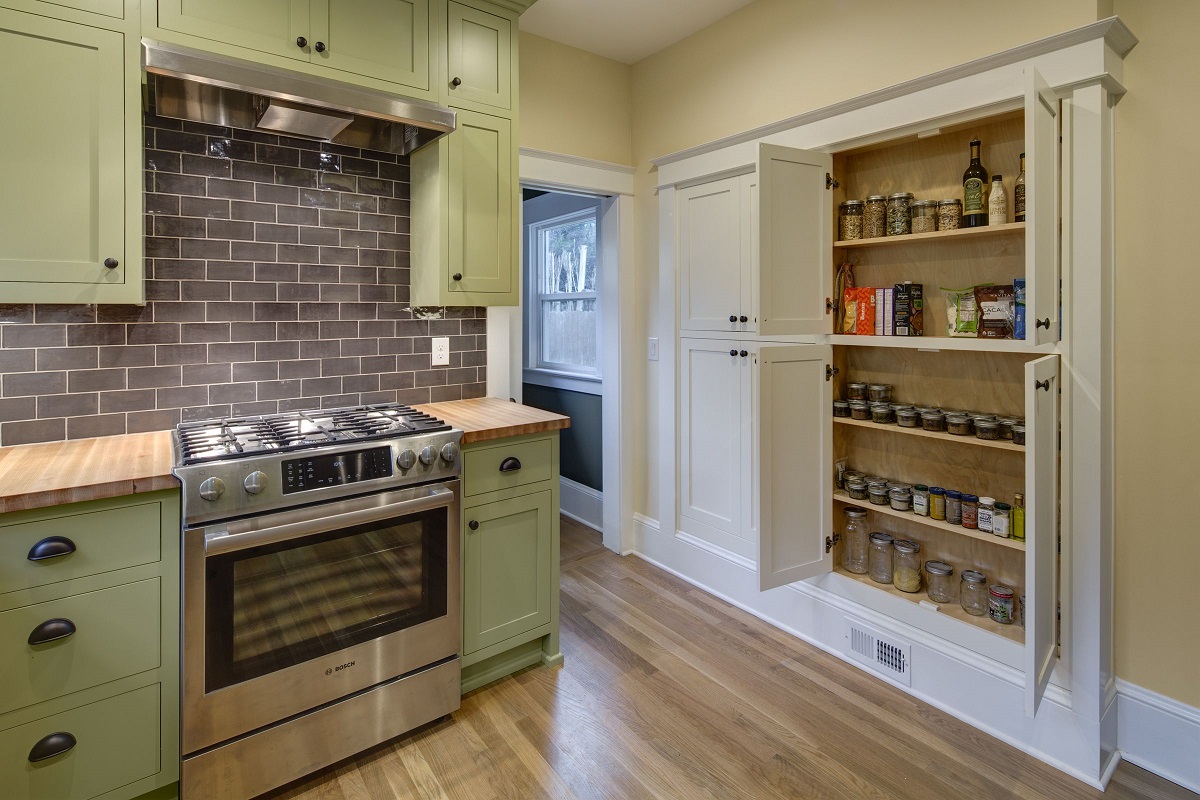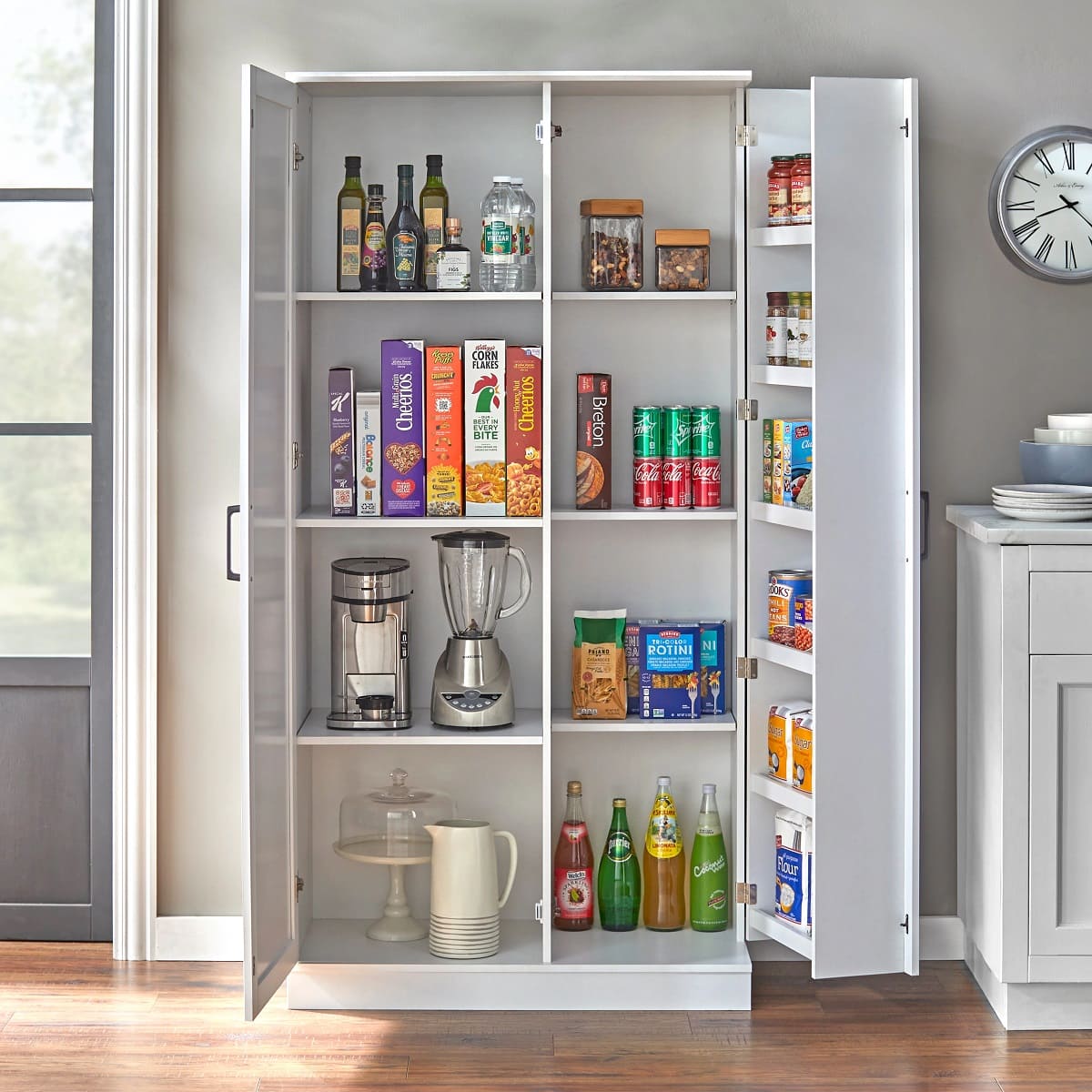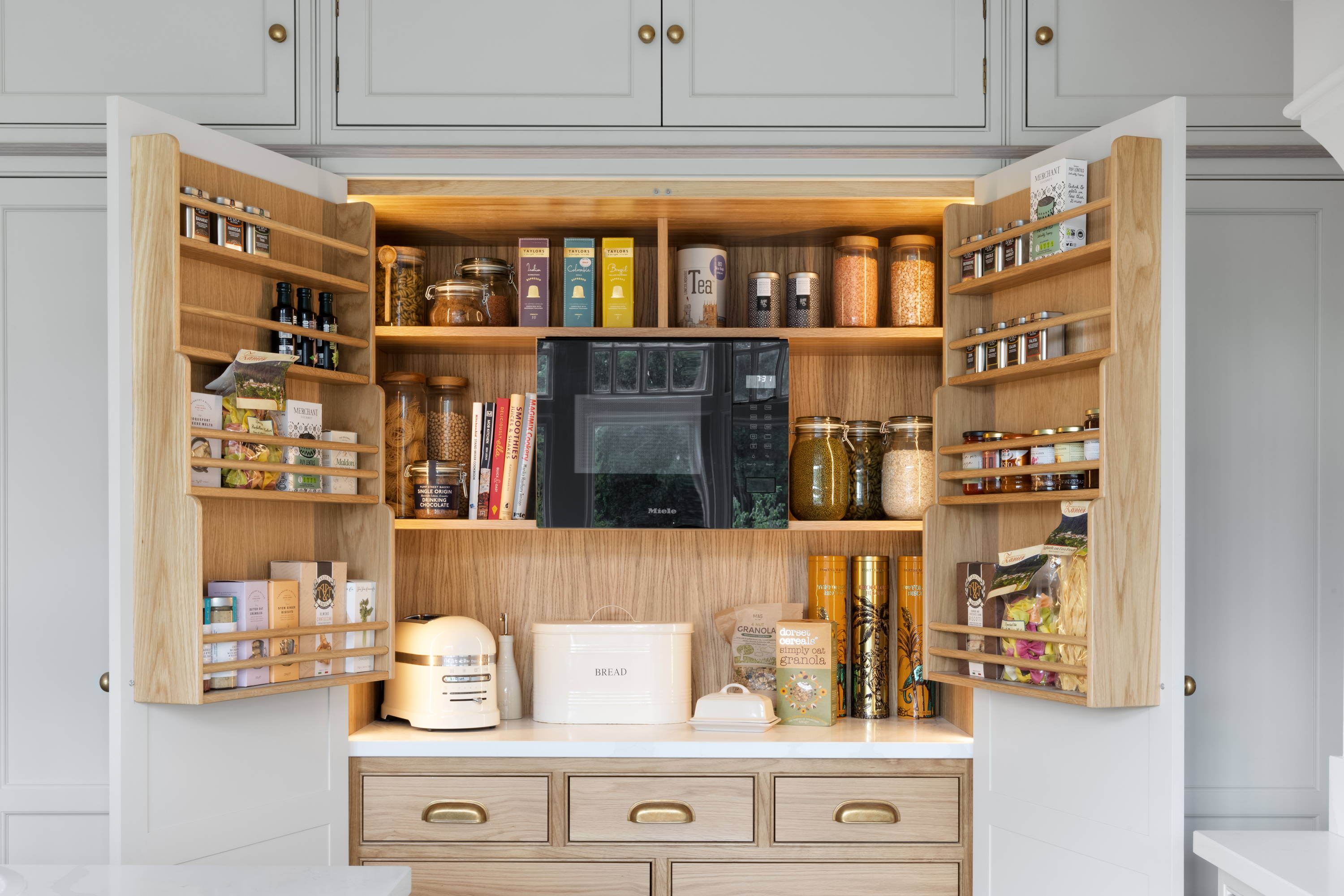Understanding the Challenge of Pull-Out Kitchen Pantry Cabinets

Traditional pantry cabinets, often deep and narrow, can present a significant challenge for accessing stored items. Reaching the back corners often requires contorting and stretching, leading to frustration and potential injuries. Moreover, the lack of organization can result in wasted space, forgotten items, and an overall inefficient storage solution. Pull-out pantry cabinets offer a practical and ergonomic solution to these challenges, revolutionizing kitchen storage and maximizing space utilization.
Types of Pull-Out Pantry Systems, Pull out kitchen pantry cabinet
Pull-out pantry systems are designed to enhance accessibility and organization within the pantry space. They come in various configurations, each with its own set of advantages and disadvantages. The following are some of the most popular types:
- Full-Extension Pull-Out Shelves: These systems offer complete access to the entire depth of the pantry cabinet, eliminating the need to reach into the back corners. They are typically made of durable materials like metal or wood, and some models include adjustable shelves for customization. Full-extension shelves are a popular choice for maximizing storage space and ensuring easy access to all items.
- Pull-Out Baskets: These systems consist of wire or metal baskets that slide out on rails, allowing for easy access to items stored within. Pull-out baskets are ideal for storing bulky items like canned goods, snacks, or cleaning supplies. They are often available in different sizes and configurations to accommodate specific needs.
- Roll-Out Shelves: These systems feature shelves that roll out on ball-bearing slides, providing smooth and effortless access to stored items. Roll-out shelves are particularly useful for storing heavier items, as the ball-bearing slides minimize friction and ensure easy movement.
- Lazy Susan Systems: Lazy Susans are rotating platforms that allow for easy access to items stored on all sides of the pantry cabinet. They are particularly useful for corner cabinets or deep pantry spaces, where reaching the back corners can be challenging. Lazy Susans are often available in different sizes and materials, and some models include adjustable shelves for customization.
Choosing the Right Pull-Out System
Selecting the appropriate pull-out pantry system depends on various factors, including the size and layout of the kitchen, storage needs, and budget. The following tips can help guide the decision-making process:
- Consider the Size and Layout of the Kitchen: The size and layout of the kitchen will determine the available space for the pull-out system. For smaller kitchens, a compact system with limited depth may be more suitable, while larger kitchens can accommodate larger systems with greater storage capacity.
- Assess Storage Needs: The type of items to be stored will influence the choice of pull-out system. For example, if the pantry is primarily used for storing canned goods, a system with baskets or shelves designed for heavy items would be appropriate. For lighter items, such as snacks or spices, a system with shallower shelves or baskets may suffice.
- Budget: Pull-out pantry systems vary in price depending on the type of system, materials used, and features included. It is important to set a budget before shopping to ensure that the chosen system fits within financial constraints. Consider the long-term value of the system and the potential savings in terms of reduced food waste and increased efficiency.
Installation and Customization: Pull Out Kitchen Pantry Cabinet

Installing pull-out pantry cabinets can be a DIY project for those with basic carpentry skills, but professional installation is recommended for complex configurations or if you’re unsure about your abilities.
Pull out kitchen pantry cabinet – Pull-out pantry cabinets offer significant customization options, allowing you to tailor them to your specific needs and kitchen design. This customization extends to drawer configurations, finishes, and hardware, enabling you to create a pantry system that perfectly complements your kitchen’s aesthetic and functionality.
Installation Guide
Installing pull-out pantry cabinets typically involves several steps, including preparation, assembly, and installation. Here’s a step-by-step guide to help you through the process:
- Measure and Plan: Accurately measure the space where you want to install the pantry cabinet and determine the desired dimensions for the pull-out system. This will help you choose the right size and configuration for your needs.
- Gather Materials and Tools: Depending on the complexity of your project, you’ll need tools such as a drill, screwdriver, level, measuring tape, saw, and possibly a jigsaw. Materials may include screws, brackets, cabinet hardware, and any necessary trim pieces.
- Prepare the Installation Area: Clear the area where you’ll be installing the pantry cabinet. If necessary, remove existing cabinets or trim to create a clean space for the new system.
- Assemble the Cabinet: Follow the manufacturer’s instructions to assemble the pantry cabinet. This may involve attaching shelves, drawers, and other components.
- Install the Cabinet: Secure the cabinet to the wall using appropriate mounting hardware. Ensure that the cabinet is level and securely fastened.
- Install the Pull-Out System: Attach the pull-out system to the cabinet according to the manufacturer’s instructions. This may involve attaching rails, slides, or other components.
- Install Hardware: Attach cabinet doors, drawer pulls, and any other hardware to the pull-out system.
- Test and Adjust: Once the installation is complete, test the pull-out system to ensure it operates smoothly and without any issues. Make any necessary adjustments to ensure proper function.
Customization Options
Pull-out pantry cabinets offer a range of customization options to personalize your kitchen storage:
- Drawer Configurations: Choose from various drawer configurations to optimize storage space for different types of items. Options include single, double, and triple drawers, as well as adjustable dividers and trays.
- Finishes: Select from a wide range of finishes to match your kitchen’s style. Options include wood veneers, laminates, painted finishes, and metal finishes.
- Hardware: Choose from a variety of hardware options, including handles, knobs, and pulls, to complement the overall design of your kitchen.
Cost Considerations
The cost of pull-out pantry cabinets can vary depending on the type of system, installation, and customization options chosen. Here’s a breakdown of typical costs:
| Component | Cost Range |
|---|---|
| Pull-Out System | $100 – $500+ |
| Cabinet (Custom or Pre-Made) | $200 – $1,000+ |
| Installation (Professional) | $200 – $500+ |
| Customization (Finishes, Hardware) | $50 – $200+ |
Remember that these are estimates, and actual costs may vary based on your specific project and location.
Maintenance and Best Practices

Pull-out pantry cabinets are a convenient and space-saving addition to any kitchen, but like any other kitchen appliance, they require proper maintenance to ensure smooth operation and longevity. Implementing a few simple maintenance practices can help keep your pull-out pantry cabinets running smoothly and looking their best for years to come.
Regular Cleaning and Maintenance
Regular cleaning is essential for maintaining the functionality and aesthetics of your pull-out pantry cabinets. The frequency of cleaning will depend on usage and the type of materials used.
- Wipe down the cabinet surfaces with a damp cloth and mild detergent regularly to remove dust, spills, and food particles. Avoid using harsh chemicals or abrasive cleaners that could damage the finish.
- Clean the tracks and rollers with a soft brush and a vacuum cleaner to remove any accumulated debris that can hinder smooth operation.
- Lubricate the rollers with a silicone-based lubricant to ensure smooth gliding and prevent squeaking.
- Check the hinges and screws for tightness and tighten them if necessary to prevent sagging or instability.
- Inspect the cabinet for any damage, such as scratches, dents, or cracks, and address them promptly to prevent further deterioration.
Troubleshooting Common Problems
Despite proper maintenance, some common problems may arise with pull-out pantry cabinets. Understanding the potential issues and their solutions can help you troubleshoot and resolve them efficiently.
- Sticking or Squeaking Rollers: If the rollers are sticking or squeaking, they may be dirty or need lubrication. Clean the rollers and tracks thoroughly and lubricate them with a silicone-based lubricant.
- Sagging or Unstable Cabinet: If the cabinet is sagging or unstable, check the hinges and screws for tightness. Tighten any loose screws or replace damaged hinges.
- Jammed Drawer: If the drawer is jammed, check for any obstructions in the tracks or rollers. Remove any debris and ensure the drawer is properly aligned.
- Broken Drawer Slide: If a drawer slide is broken, it will need to be replaced. Contact the manufacturer or a qualified repair technician for assistance.
Maximizing Space and Organization
Pull-out pantry cabinets offer ample storage space, but maximizing their potential requires smart organization and utilization.
- Utilize vertical space: Install shelves and dividers to create vertical compartments and utilize the full height of the cabinet.
- Use clear containers: Storing items in clear containers allows for easy visibility and quick access.
- Label everything: Labeling containers and shelves helps you quickly locate items and maintain order.
- Group similar items: Group similar items together, such as spices, canned goods, or baking supplies, to streamline your pantry organization.
- Rotate stock: Follow a FIFO (First In, First Out) system to ensure that older items are used before newer ones.
Pull-out kitchen pantry cabinets are a godsend for maximizing space, but sometimes even they can feel cramped. If you’re struggling with limited storage, consider a 30 inch wide linen cabinet for your bathroom or bedroom. It’s amazing how much a dedicated, well-organized space can alleviate the pressure on your kitchen pantry, leaving you with more room for the essentials.
Pull-out kitchen pantry cabinets are a godsend for maximizing storage space. They allow you to easily access items at the back of the cabinet, unlike traditional shelves. A common width for these cabinets is 46 inches, which can accommodate a wide range of pantry needs.
For those seeking more information on the design, installation, and use of a cabinet 46 inches wide , there are excellent resources available online. A well-designed pull-out pantry cabinet can be a real game-changer for any kitchen, keeping your pantry organized and efficient.
